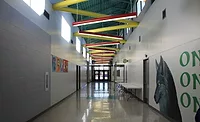PASS releases updates to school safety and security guidelines

Image via Unsplash
The Partner Alliance for Safer Schools (PASS) recently released the sixth edition of its Safety and Security Guidelines for K-12 Schools, which offers best practices for securing school facilities from subject matter experts across the education, public safety and industry sectors.
According to the PASS guidelines document, schools have been the second most frequent targets in active shooter incidents as defined by the FBI since 2000. Highly publicized mass murders such as Columbine High School, Sandy Hook Elementary School, Marjory Stoneman Douglas High School and most recently The Covenant School in Nashville, have led to reassessments of how administrators can manage risk in the modern K-12 environment.
The PASS school security and safety guidelines, first released in 2015, provides school administrators, school boards and public safety and security professionals with a road map for implementing a layered and tiered approach to enhance the safety of school environments and a tool to prioritize needs.
New key highlights from the sixth-edition guidelines include:
- More focused best practice recommendations to identify needed areas of improvement by separating the tier continuum practices that are already required by federal law or regulation or are already uniformly implemented throughout the U.S.
- Redesignated tiers for clarity, which recommend that all schools and districts work toward Tier One measures regardless of location, budget or risk profile. If Tier One measures are in place, all should work towards Tier Two. Tiers 3 and 4 measures may be needed depending on an assessment from the core security team.
- Enhancements to the section on classroom security, a critical area for school safety. This section is simplified and updated with current terminology, illustrations and recommendations consistent with modern, code-compliant door hardware and access control equipment.
- A new enhanced technologies section details solutions under consideration by many schools and districts that show potential for making significant improvements to school safety but may not yet be widely adopted. These include newer technologies in the areas of weapons detection, analytics, emergency communications and biometrics.
“Facility security measures are a critical part of protection, mitigation and response and to keeping our schools safe,” said Jeremy Gulley, superintendent of Jay School Corporation. “The latest version of the PASS Safety and Security Guidelines reflects and addresses the most current threats facing K-12 schools and offers robust information and best practices for those of us in the education community on how we can better secure our schools.”
Looking for a reprint of this article?
From high-res PDFs to custom plaques, order your copy today!








